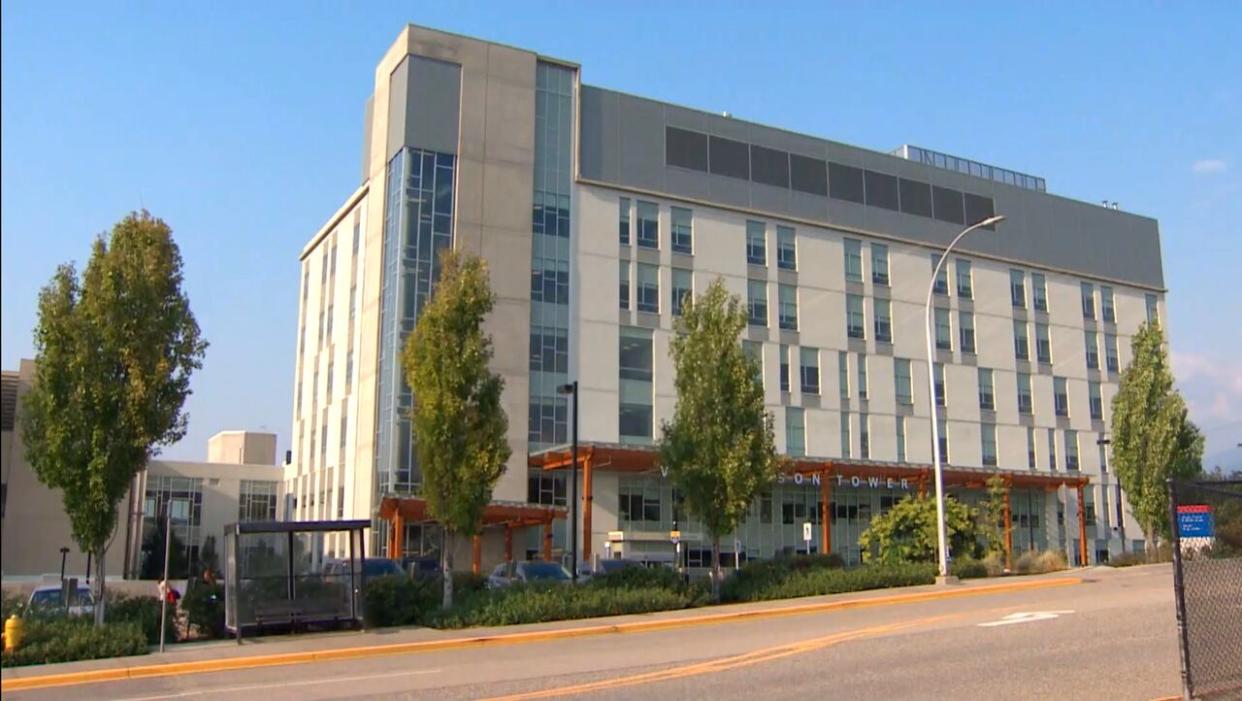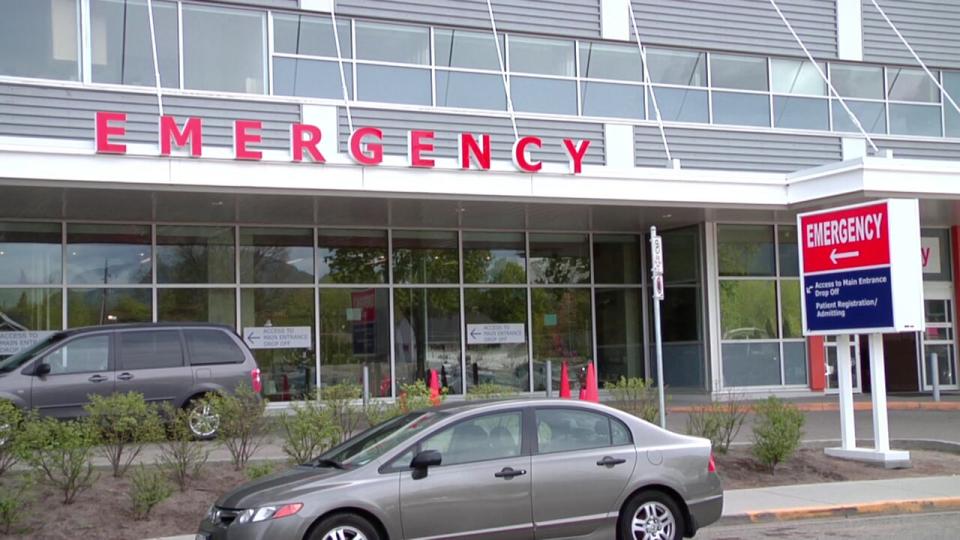Vernon ER visits on the rise reflecting broader issues: doctors

Unscheduled visits to the Vernon Jubilee Hospital emergency department have been trending up in recent years, something physicians in other cities say is reflective of a broader problem in emergency rooms across the province.
Data obtained by CBC News through a Freedom of Information and Protection of Privacy Act request shows Vernon's emergency department saw more than 4,600 patients this February compared to more than 3,400 in February 2021, an increase of more than a third in three years.
Interior Health said population growth in the Vernon area and COVID are both factors in the rising numbers.
Chris Simms, the executive director of clinic operations for the North Okanagan, said there was a movement away from going to facilities to receive care during the pandemic.
"We would have had numbers that came down as a result of COVID initially and then increased again," he said.
"Although we've gone up a few additional visits, and I certainly don't want to under-represent that, it has been a fairly consistent year in terms of what we've seen come into the emergency department."
Vancouver emergency physician Dr. Jill McEwen called the increase in visits "pretty typical" compared to other places.
McEwen, who is also a past president of the Canadian Association of Emergency Physicians, said there are a variety of factors driving people to visit emergency rooms overall.
"I think, in general, the emergency department is the fall guy to use a colloquial term for the failing medical system — so patients that don't have family physicians that don't have acute care services like surgery, ICU, internal medicine care," McEwen said.
"There [are] long waits for those services and, as a result, they end up coming to the emergency department (ED) because the ED is the only place that can't say no and can't close and can't say their quota is full."
McEwen said a growing and aging population can also drive emergency department visits. It's a sentiment echoed by Dr. Jeffrey Eppler, an emergency department doctor in Kelowna.
"There is no question there is an upward trend that I could see in the visit numbers from Vernon Jubilee Hospital, and anecdotally, I have to say our numbers keep climbing as the population in the Okanagan grows," said Eppler.
"A lot of people that we see in emergency are there partly because they don't have access to primary care. That's not the only reason, but it is certainly a part of it."

Emergency physicians from other jurisdictions say emergency room visits are rising provincewide. (CBC)
McEwen said when there is crowding in an emergency department it can also impact staffing levels.
"It's very distressing for nurses and physicians to see patients who need to be seen quickly waiting in waiting rooms for long periods of time. Especially for nurses who can go somewhere else and work where they are not continuously asked by patients why it is taking so long when they completely agree with them," said McEwen.
Steps taken to remedy patient load
Simms said Interior Health kept extra COVID-era positions in place, expecting the need for that staff would not drop off. They also have the flexibility to bring in more staff when needed.
The hospital has reduced the number of patients waiting in the ER for an inpatient bed and overcrowding in the hospital in general has also improved, Simms said.
"Throughout the fall and during respiratory season it was not uncommon to see the site [at a capacity of] 120 per cent, 130 per cent, 140 per cent, on a few occasions," said Simms.
"Really, the site has held steady at anywhere from 95 to 105 per cent over the last couple of months here, and full credit to the team because that certainly takes additional pressure off."
LISTEN | Vernon ER getting busier:
Walk-in clinics
The city's last two walk-in clinics closed last fall, creating concern that the lack of walk-in clinics would send people with few other options to the emergency department.
The emergency department visit data didn't show a clear impact from the walk-in closures.
However, visits increased, year-over-year, almost every month, even before those closures.
Vernon patients recently got a new option for care: a new walk-in clinic has recently opened at a pharmacy in Vernon, and Community Futures North Okanagan is putting together an application to the province for the not-for-profit clinic which could offer primary health care.


